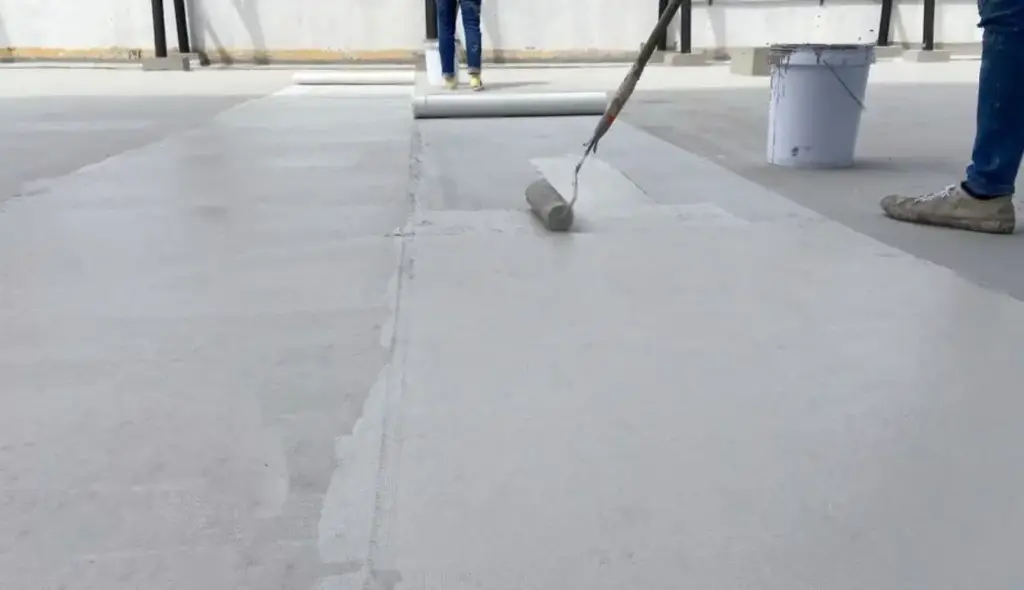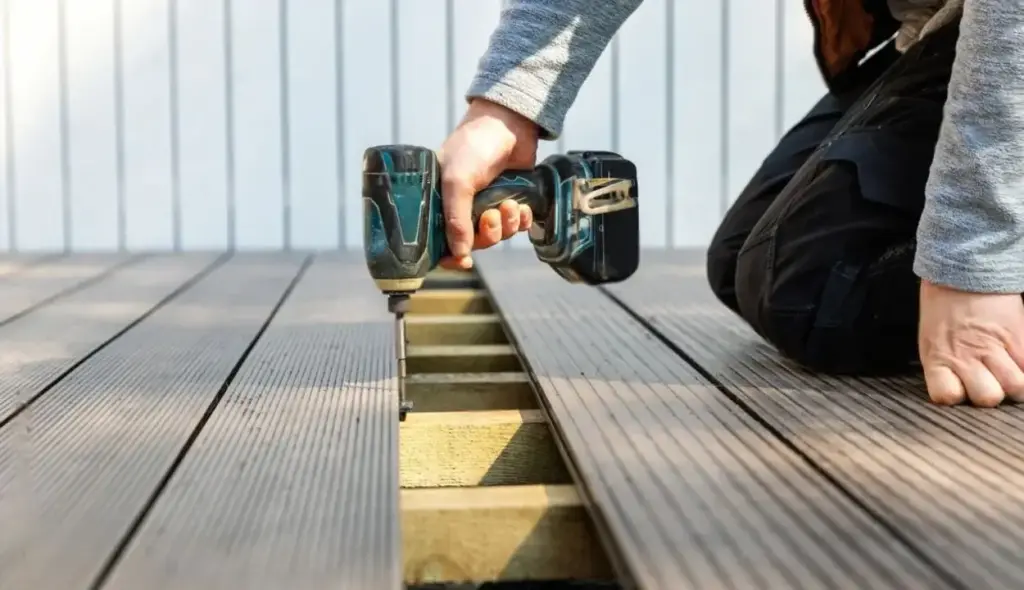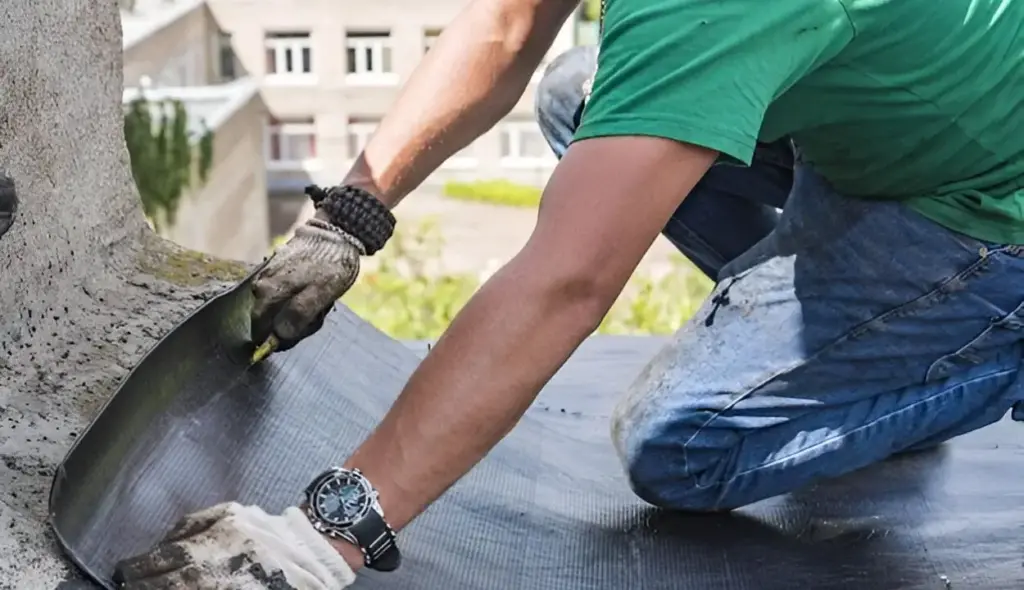Protecting vulnerable roof decks from weather damage is critical to avoid costly repairs and leaks. This in-depth guide will explore what roof deck protection entails, when it should be used, available products, proper installation methods, and how it benefits roof performance.
Whether you’re a homeowner, contractor, or architect, this resource covers everything you need to know about safeguarding roof decks during and after construction.
Key Takeaways
What Exactly is Roof Deck Protection?
It refers to waterproof or water-resistant materials installed over the roof deck boards or sheets to serve as an extra protective layer. Roof decks provide the structural base for roof systems before installation of shingles, membrane, metal panels, or other finish coverings.
The deck is often exposed during construction. It shields this vulnerable substrate from moisture damage if the permanent roof is not yet installed or leaks later occur.
Situations Where Roof Deck Protection is Advised

There are several scenarios where utilizing proper roof protection is recommended to avoid roof damage:
Prioritize roof deck protection in construction delays for lasting defense against moisture, especially in climates prone to heavy precipitation or for valuable structures needing extra waterproofing.
Without proper deck protection in these situations, uncovered roof decks are likely to suffer distortion, deterioration, mold growth, and potentially costly structural repairs from moisture damage.
Overview of Roofing Deck Protection Products

There are several categories of products used to deliver effective and temporary waterproof coverage to roof decks:
Self-Adhering Membranes
Peel-and-stick sheets like ice and water barrier or butyl rubber sheets with release paper backing to bond fully to the deck.
Liquid-Applied Membranes
Roll or spray-on coatings that cure into seamless rubberized membranes. Materials like acrylic, polyurethane, asphalt, or roof coatings.
Roofing Underlayments
Felt or synthetic secondary water barrier sheets installed under primary roof coverings as extra leak protection.
Corrosion-Resistant Sheet Products
Galvanized metal sheets or fiberglass mats that protect metal roof decks from corrosion damage during construction delays.
Comparison of Key Roof Deck Protection Products
| Product | Description | Key Benefits | Considerations |
| Self-Adhering Membranes | Peel-and-stick rubberized sheets | Fully bonded, pre-cut sheets for easy installation | Surface prep required, seams can be vulnerable |
| Liquid-Applied Membranes | Roll or spray-on coatings | Seamless, monolithic coverage | Must cure fully before roofing, affected by temperature |
| Roofing Underlayments | Secondary sheets under roofing | Added leak protection, affordable | Not stand-alone waterproofing |
| Corrosion-Resistant Sheets | Galvanized metal, fiberglass | Protect metal decks from corrosion | Temporary protection only |
Each protection material type has advantages in certain applications depending on the specific roof construction and duration of exposure.
Best Practices for Installing Roof Deck Protection

To achieve water-tight performance and deck protection, proper installation technique is critical:
Cover deck without gaps, use proper adhesives, overlap seams, extend up sidewalls, add drainage, inspect periodically for a leak-free construction process.
When installed per manufacturer instructions, roof protection delivers proven leak-free shielding that allows construction to continue normally even in heavy rain or snow.
Key Benefits of Roof Protection
Utilizing reliable waterproofing products over roof decks has many advantages for the building and roofing project:
| Benefits | Description |
|---|---|
| Prevents Leaks & Damage | Protects deck substrate from moisture, preventing distortion, deterioration, mold growth, and costly repairs. |
| Construction Flexibility | Allows roofing to be delayed independently from decking due to weather without damaging the deck. |
| Weatherproof Conditions | Allows roofing contractors to work effectively even in rain, snow, or storms. |
| Longer Roof Lifespan | Prevents initial deck damage from reducing the lifespan of the roof. |
| Guards Vulnerable Areas | Critical areas like eaves, valleys, flashings receive extra protection. |
| Peace of Mind | Deck is safeguarded before, during, and after roofing for the greatest water tightness. |
| Insurance & Warranties | May allow better insurance terms and qualify for enhanced roofing warranties. |
| Cost Savings | Prevents expensive deck repairs or replacement if damaged by moisture. |
How Ice & Water Shield Delivers Premium Protection

Ice and water barrier sheets are a specialized roof deck protection product made from modified asphalt or butyl rubber that delivers exceptional leak-proofing:
All-Weather Roofing
Allows roofing to continue normally even in heavy precipitation due to its water tightness.
Wind-Driven Rain Resistance
Unique adhesive properties form water-tight seals around nails and at overlaps to resist wind-driven rain penetration.
Self-Sealing Around Fasteners
Forms a gasket around inserted fasteners to prevent leaks.
Long-Term Secondary Barrier
Remains as a permanent secondary waterproofing later below shingles or other roofing.
Guards Vulnerable Areas
Provides extra coverage at eaves, valleys, vents, low-slope sections.
Ice and water barrier offers premium protection for maximum peace of mind on critical roof areas.
You Can Also Read:
What Is Roof Decking? A Comprehensive Guide 2024
Radiant Barrier Roof Decking: A Comprehensive Guide 2024
Conclusion
Specifying proper roof deck protection is a smart technique to shield vulnerable decks from moisture damage during and after construction. The right products properly installed create a temporary waterproof barrier that prevents leaks, allows construction schedule flexibility, and protects roof performance long-term.
Consult a qualified roofing professional to determine the optimal solutions for your specific project type and climate. Investing in reliable deck protection will safeguard your roofing investment from the critical first step.
FAQ’s
What are the main benefits of using roof deck protection?
It Prevents leaks, moisture damage, and corrosion when roofing is delayed or roof is damaged later. Provides construction scheduling flexibility and secondary long-term leak protection.
When should roofing deck protection be installed?
When permanent roofing will be delayed after deck goes on, the deck will be exposed for extended time, on low-slope roofs, in rainy/snowy climates, and for extra leak security.
What are peel-and-stick membranes used for protection of roof deck ?
Pre-cut, self-adhering rubberized sheets that bond fully to the roof deck for easy installation of a waterproof barrier.
How does ice and water shield protect the roof deck?
Its robust waterproofing allows roofing in any weather. Self-seals around fasteners and resists wind-driven rain. Provides long-term secondary leak protection.
What are the best practices for installing roof deck protection?
Fully seal the deck, integrate with flashings, use compatible adhesives/fasteners, overlap seams, inspect periodically, follow all manufacturer instructions.

